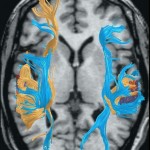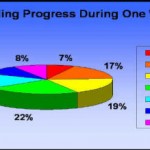Eddy Cavalli, Valérie Chanoine, Yufei Tan, Jean-Luc Anton, Bruno L. Giordano, Felipe Pegado, Johannes C. Ziegler. Atypical Hemispheric Re-Organization of the Reading Network in High-Functioning Adults with Dyslexia: Evidence from Representational Similarity Analysis. Imaging Neuroscience. , (2024).
Sarah V. Di Pietro, David Willinger, Nada Frei, Christina Lutz, Seline Coraj, Chiara Schneider, Philipp Stämpfli, Silvia Brem. Disentangling influences of dyslexia, development, and reading experience on effective brain connectivity in children. NeuroImage. Available online 10 January 2023, 119869, (2023).
Rachel L. Eggleston, Rebecca A. Marks, Xin Sun, Chi-Lin Yu, Kehui Zhang, Nia Nickerson, Xiaosu Hu, Valeria Caruso. Adriene Beltz, Ioulia Kovelman. Lexical morphology as a source of risk and resilience for learning to read with dyslexia: An fNIRS investigation. Preprint. Created: May 08, 2023, (2023).
Anastasia Klimovich-Gray, Giovanni Di Liberto, Lucia Amoruso, Ander Barrena, Eneko Agirre, Nicola Molinaro. Increased top-down semantic processing in natural speech linked to better reading in dyslexia. NeuroImage. Available online 31 March 2023, 120072, (2023).
Amanda Martinez-Lincoln, Tess S Fotidzis, Laurie E Cutting, Gavin R Price, Laura A Barquero. Examination of common and unique brain regions for atypical reading and math: a meta-analysis. Cerebral Cortex. bhad013, (2023).
Sabrina Turker, Philipp Kuhnke, Zhizhao Jiang & Gesa Hartwigsen. Disrupted network interactions serve as a neural marker of dyslexia. Communications Biology. 6, Article number: 1114 (, (2023).
Hélène Brèthes, Eddy Cavalli, Ambre Denis-Noël, Jean-Baptiste Melmi, Abdessadek El Ahmadi, Maryse Bianco and Pascale Colé. Text Reading Fluency and Text Reading Comprehension Do Not Rely on the Same Abilities in University Students With and Without Dyslexia. Frontiers in Psychology. 13:866543, (2022).
Elise Lefèvre, Jeremy M. Law, Pauline Quémart, Royce Anders, and Eddy Cavall. What’s Morphology Got to Do With It: Oral Reading Fluency in AdolescentsWith Dyslexia. Journal of Experimental Psychology: Learning, Memory, and Cognition. Online First Publication, August 25, 2022, (2022).
Xi Yu, Silvina Ferradal, Jade Dunstan, Clarisa Carruthers, Joseph Sanfilippo, Jennifer Zuk, Lilla Zöllei, Borjan Gagoski, Yangming Ou, P. Ellen Grant, Nadine Gaab. Patterns of Neural Functional Connectivity in Infants at Familial Risk of Developmental Dyslexia. JAMA Network Open. 5(10):e2236102, (2022).
Xi Yu, Silvina Ferradal, Jade Dunstan, Clarisa Carruthers, Joseph Sanfilippo, Jennifer Zuk, Lilla Zöllei, Borjan Gagoski, Yangming Ou, P. Ellen Grant, Nadine Gaab. Atypical functional connectivity of the left fusiform gyrus in infants at familial risk for developmental dyslexia. MedRxiv Preprints. , (2022).
Katarzyna Chyl, Gorka Fraga-González, Silvia Brem & Katarzyna Jednoróg. Brain dynamics of (a)typical reading development—a review of longitudinal studies. NPJ - Science of Learning. 6, Article number: 4, (2021).
Xiaohui Yan, Ke Jiang, Hui Li, Ziyi Wang, Kyle Perkins, Fan Cao. Convergent and divergent brain structural and functional abnormalities associated with developmental dyslexia. eLife:Neuroscience. , (2021).
Noor Z Al Dahhan, John R Kirby, Donald C Brien, Rina Gupta, Allyson Harrison, Douglas P Munoz. The Biological Basis Of Dyslexia At A Neural Systems Level. Brain Communications. fcaa173, (2020).
O Ozernov-Palchik, TM Centanni, SD Beach, S May, T Hogan, JDE Gabrieli. Distinct neural substrates of individual differences in components of reading comprehension in adults with or without dyslexia. NeuroImage. Volume 226, 1 February 2021, 117570, (2020).
Rasamimanana Maud; Mylène Barbaroux, Pascale Colé, Mireille Besson. Semantic compensation and novel word learning in university students with dyslexia. Neuropsychologia. Volume 139, 107358, (2020).
Xi Yu, Jennifer Zuk, Meaghan V. Perdue, Ola Ozernov-Palchik, Talia Raney, Sara D. Beach, Elizabeth S. Norton, Yangming O, John D. E. Gabrieli, Nadine Gaab. Putative protective neural mechanisms in pre-readers with a family history of dyslexia who subsequently develop typical reading skills. Human Brain Mapping. , (2020).
Jennifer Zuk, Jade Dunstan, Elizabeth Norton, Xi Yu, Ola Ozernov-Palchik, Yingying Wang, Tiffany P. Hogan, John D. E. Gabrieli, Nadine Gaab. Multifactorial pathways facilitate resilience among kindergarteners at risk for dyslexia: A longitudinal behavioral and neuroimaging study. Developmental Science. Accepted manuscript online: 01 May 2020, (2020).
Łuniewska, Chyl, Debska, Banaszkiewicz, Żelechowska, Marchewka, Grabowska and Jednoróg. Children with dyslexia and familial risk for dyslexia present atypical development of the neuronal phonological network. Frontiers in Neuroscience. , (2019).
Mittag, Maria; Eric Larson, Samu Taulu, Maggie Clarke, Patricia Kuhl. Altered auditory sampling in infants at risk for dyslexia across the sensitive period of native phoneme learning. The Journal of the Acoustical Society of America. 146, 2832, (2019).
Whitney, Carol, Paddy Ross, Zhiheng Zhou, and Lars Strother. The Visual Word Form Area Natively Processes Shape Sequences: Implications for Developmental Dyslexia. PsyArXiv. June 9, (2019).
Aboud, Katherine S., Laura A. Barquero and Laurie E. Cutting.. Prefrontal mediation of the reading network predicts intervention response in dyslexia. Cortex. 101: 96-106, April, (2018).
Smadar Z. Patael, Emily A. Farris, Jessica M. Black, Roeland Hancock, John D. E. Gabrieli, Laurie E. Cutting,. Brain basis of cognitive resilience: Prefrontal cortex predicts better reading comprehension in relation to decoding. PLOS One. Online: June 14, (2018).
Yu, Xi; Jennifer Zuk, Nadine Gaab. What Factors Facilitate Resilience in Developmental Dyslexia? Examining Protective and Compensatory Mechanisms Across the Neurodevelopmental Trajectory. Child Development Perspectives. Volume 12, Issue 4 , Pages 240-246, (2018).
Eddy Cavalli, Pascale Colé, Chotiga Pattamadilok, Jean-Michel Badier, Christelle Zielinski, Valérie Chanoine, Johannes C. Ziegler. Spatiotemporal reorganization of the reading network in adult dyslexia. Cortex. Volume 92, Pages 204-221, (2017).
Eddy Cavalli, Lynne G. Duncan, Carsten Elbro, Abdessadek El Ahmadi, Pascale Colé. Phonemic—Morphemic dissociation in university students with dyslexia: an index of reading compensation?. Annals of Dyslexia. Vol 67, Issue 1, pp 63-84, (2017).
Lucy Anne Livingston, Francesca Happé. Conceptualising compensation in neurodevelopmental disorders: Reflections from autism spectrum disorder. Neuroscience & Biobehavioral Reviews. Volume 80, Pages 729-742, (2017).
Shaywitz, B.A., Skudlarski, P., Holahan, J.M., Marchione, K.E., Constable, R.T., Fulbright, R.K., Zelterman, D., Lacadie, C. and Shaywitz, S.E.. Age‐related changes in reading systems of dyslexic children. Annals of Neurology. 61: 363-370, (2017).
Karen E. Waldie, Anna J. Wilson, Reece P. Roberts, David Moreau. Reading network in dyslexia: Similar, yet different. Brain and Language. Volume 174, Pages 29-41, November, (2017).
Barquero, Laura Alley. Predicting Responsiveness to Reading Intervention with fMRI. PhD Dissertation. , (2015).
Matthias Schurz, Heinz Wimmer, Fabio Richlan, Philipp Ludersdorfer, Johannes Klackl, Martin Kronbichler. Resting-State and Task-Based Functional Brain Connectivity in Developmental Dyslexia. Cerebral Cortex. Volume 25, Issue 10, Pages 3502–3514, (2015).
Maaike Vandermosten, Jolijn Vanderauwera, Catherine Theys, Astrid De Vos, Sophie Vanvooren, Stefan Sunaert, Jan Wouters, Pol Ghesquière. A DTI tractography study in pre-readers at risk for dyslexia, Developmental Cognitive Neuroscience. Developmental Cognitive Neuroscience. Volume 14, Pages 8-15, (2015).
Joanna A Christodoulou, Stephanie N Del Tufo, John Lymberis, Patricia K Saxler, Satrajit S Ghosh, Christina Triantafyllou, Susan Whitfield-Gabrieli, John D E Gabrieli. Brain Bases of Reading Fluency in Typical Reading and Impaired Fluency in Dyslexia. PLoS ONE. 9(7): e100552, (2014).
Alfred Mansour, Susan M. Bowyer, Annette E. Richard, John E. Moran, Laszlo A. Erdodi, Amy Olszewski, Lesley Pawluk, Daniel Jacobson, Kelly Vogt, Aimee M. Moore, Renée Lajiness-O’Neill. Magnetoencephalography Coherence Source Imaging in Dyslexia: Activation of Working Memory Pathways. Psychology. Vol.5 No.16, pp 1879-1910, (2014).
Karen E Waldie, Charlotte E Haigh, Gjurgjica Badzakova-Trajkov, Jude Buckley, Ian J Kirk. Reading the wrong way with the right hemisphere. Brain Sciences. 3(3), 1060–1075, (2013).
Daniela Gebauer 1, Christian Enzinger, Martin Kronbichler, Matthias Schurz, Gernot Reishofer, Karl Koschutnig, Reinhard Kargl, Christian Purgstaller, Franz Fazekas, Andreas Fink. Distinct patterns of brain function in children with isolated spelling impairment: new insights. Neuropsychologia. Volume 50, Issue 7, Pages 1353-1361, (2012).
Seghier ML, Neufeld NH, Zeidman P, Leff AP, Mechelli A, Nagendran A, Riddoch JM, Humphreys GW, Price CJ.. Reading without the left ventral occipito-temporal cortex. Neuropsychologia. 50(14), 3621-3635, (2012).
Shelley Shaul, Yossi Arzouan, Abraham Goldstein. Brain activity while reading words and pseudo-words: a comparison between dyslexic and fluent readers. International Journal of Psychophysiology. Volume 84, Issue 3, Pages 270-276, (2012).
Nicole Davis , Laura Barquero, Donald L Compton, Lynn S Fuchs, Douglas Fuchs, John C Gore, Adam W Anderson. Functional correlates of children's responsiveness to intervention. Developmental neuropsychology. Developmental Neuropsychology. Volume 36- Issue 3, Pages 288-301, (2011).
Welcome Suzanne E, Chiarello Christine, Thompson Paul M, Sowell Elizabeth R. Reading Skill is Related to Individual Differences in Brain Structure in College Students. Human Brain Mapping. 32 (8):1194–1205, (2011).
Stefan Heim, Marion Grande, Elisabeth Meffert, Simon B. Eickhoff, Helen Schreiber, Juraj Kukolja, Nadim Jon Shah, Walter Huber, Katrin Amunts. Cognitive levels of performance account for hemispheric lateralisation effects in dyslexic and normally reading children,. Neuroimage. Volume 53, Issue 4, Pages 1346-1358, (2010).
Neville W. Hennessey, Adele Deadman, Cori Williams. Semantic effects on word naming in children with developmental dyslexia. Journal of Research in Reading. Volume35, Issue3, Pages 267-286, (2010).
Hoeft Fumiko, McCandliss Bruce D, Black Jessica M, et al. Neural systems predicting long-term outcome in dyslexia. Proceedings of the National Academy of Science. Vol 108 No. 1: 361-366, (2010).
Suzanne E. Welcome, Christiana M. Leonard, Christine Chiarello. Alternate reading strategies and variable asymmetry of the planum temporale in adult resilient readers. Brain and Language. 113: 73-83, (2010).
Sarah Illingworth, Dorothy V.M. Bishop. Atypical cerebral lateralisation in adults with compensated developmental dyslexia demonstrated using functional transcranial Doppler ultrasound. Brain and Language. Volume 111, Issue 1, Pages 61-65,, (2009).
Welcome, Suzanne E; Christine Chiarello, Laura K. Halderman, Christiana M. Leonard. Lexical processing skill in college-age resilient readers. Reading and Writing. Volume 22, Issue 3, pp 353–371 |, (2009).
Bolger, D. J., Minas, J., Burman, D. D., & Booth, J. R.. Differential effects of orthographic and phonological consistency in cortex for children with and without reading impairment. Neuropsychologia. 46(14), 3210–3224, (2008).
Leonard Christiana M, Eckert Mark A. Assymetry and Dyslexia. Developmental Neuropsychology. , (2008).
Christine Chiarello, Linda J. Lombardino, Natalie A. Kacinik, Ronald Otto, Christiana M. Leonard. Neuroanatomical and behavioral asymmetry in an adult compensated dyslexic. Brain and Language,. Volume 98, Issue 2, Pages 169-181,, (2006).
S. Hélène Deacon, Rauno Parrila & John R. Kirby. Processing of derived forms in high-functioning dyslexics. Annals of Dyslexia. 56, 103–128, (2006).
Shaywitz SE, Shaywitz BA, Fulbright R, et al. Neural Systems for Compensation and Persistence: Young Adult Outcome of Childhood Reading Disability. Biological Psychiatry. 54:25-33, (2003).
Martin Ingvar, Peter af Trampe, Torgny Greitz, Lars Eriksson, Sharon Stone-Elander, Curt von Euler. Residual differences in language processing in compensated dyslexics revealed in simple word reading tasks. Brain and Language. 83(2), 249–267, (2002).
Rumsey JM, Horwitz B, Donohue BC, Nace KL, Maisog JM, Andreason P.. A functional lesion in developmental dyslexia: left angular gyral blood flow predicts severity.. Brain and Language. 70(2):187-204, (1999).
B. Horwitz, J. M. Rumsey, and B. C. Donohue. Functional connectivity of the angular gyrus in normal reading and dyslexia. Proceedings of the National Academy of Sciences. 95(15): 8939–8944, (1998).
Linda S. Siegel, David Share, Esther Gava. Evidence for Superior Orthographic Skills in Dyslexics. Psychological Science. Volume: 6 issue: 4, page(s): 250-254, (1995).





